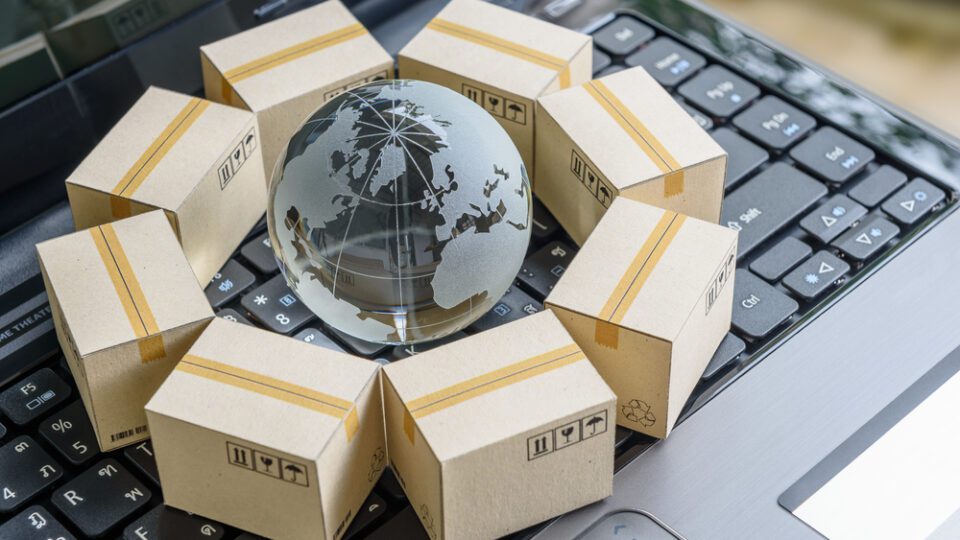Where will the next great international business opportunity appear? The somewhat unlikely locations are eight rapidly growing countries that are currently off of most retailers’ radar: Bangladesh, Egypt, Ethiopia, India, Indonesia, Kenya, Nigeria and the Philippines. These markets offer a level playing field where digital commerce is everything, most major players are relative unknowns and companies will need to develop new strategies to succeed, according to The Next Billion Consumers: A Fast Growing Opportunity for Digital Commerce report from Accenture.
Digital commerce revenues in these eight countries have quadrupled since 2017, reaching the equivalent of $211 billion in 2022, and this number will only grow as these markets mature. Additionally, 40% of the world’s largest consumer brands have no presence in these markets, and 36% of the population consists of people aged six to 26 years old. However, unlike in Western markets, the entire population, not just its younger members, is undergoing a “digital leapfrog” that is making them eschew traditional brick-and-mortar in favor of pure ecommerce.
“It will affect not only the newest generation, but everyone — because no one ever had a [landline],” said Fabio Vacirca, Global Head of Commerce at Accenture in an interview with Retail TouchPoints. “No one ever visited a bank branch. No one ever went to a hypermarket. Of course, the new generation — the tech-savvy, digital-savvy generation — will be the ones teaching it to their parents, the Boomers and Gen X, but the leapfrog is something that will affect everyone. The traditional models that we all grew up with in Europe and North America simply did not exist in that part of the world. The new billion consumers do not have a generational stratification like we have in the Western world.”
Retailers will need to shape their strategies for these countries using these three principles:
- Learning to become a digital pure-play: Whereas prior international expansion has had an omnichannel element, retailers need to take on an almost entirely digital presence in these countries, making usage of social media platforms a potentially make-or-break element of the overall strategy;
- Overcoming logistical challenges with creativity: Retailers will face the usual challenges of international business alongside the difficulty of managing supply chains in developing markets, which will make local players key partners — and could create a new paradigm for how retailers expand to new geographies; and
- Preparing for a new kind of expansion: Many retailers learned important lessons from their expansions into China, but the home countries of the next billion consumers will require entirely new and unique strategies — providing an opportunity for less experienced brands to compete effectively even with international giants.
Why Digital Pure-Play is the Only Way
The up-and-coming shoppers of these eight countries are already digital experts, and that definitely applies to how they like to shop. In fact, 80% of this group uses channels such as search engines, social networks and videos to research products and services before purchasing, while another 76% are influenced by posts with lots of “likes” or “good comments” on social media when deciding whether to buy something online.
While this provides a point of familiarity for retailers used to managing shopper expectations on social media, they need to be aware of how the digital leapfrog will impact the relationship between their brand and the next billion consumers. Traditionally, retailers use social media to generate buzz while reserving the actual purchase experience to stores or their own digital storefronts. However, more than half of the shoppers in these countries prefer shopping on social media to other purchasing apps.
Social media thrives on impressions from what Vacirca calls “the last moment of truth, when you utilize the product — you eat, you shave, you clean, etc.” In contrast, “retailers have only the secondary moment of truth, which is when you bought it. They’ve tried to make that moment a special one and a remarkable one where you remember it and post something about it, but now this place will not exist. So you need to think like [a] pure-play.”
Vacirca noted that “there is no magic” when it comes to retailers trying to find a way to get their customers excited enough to boost them on social media. Retailers also will need to put in extra work to compete with the manufacturers looking to sell directly in these new markets, a shift that may require a whole new corporate atmosphere.
“One way is to acquire and get the culture and then leverage and build on the acquisition,” said Vacirca. “Another one — which can be interesting because these are new places — is that it’s hard to self-disrupt or change the culture of a company from the inside, but it can be more doable if you think about opening a new branch in a country where you don’t exist. So if you are a big retailer and you don’t have any presence in one of these eight countries, setting up an office can be like a startup. You can try to create a brand new culture with a digital-first pure-play approach.”
Look to Locals to Help Overcome Logistical Challenges
Expanding internationally always has its challenges, and they grow exponentially when it comes to regions that are still developing in many ways. Issues can range from a lack of legal and financial stability to limited banking options to poor infrastructure that hampers supply chain development. Major cities tend to be the most developed, making them good staging grounds for retailers looking to become involved.
“The infrastructure is chaotic, but it exists in mega cities,” said Vacirca. “So you go to Johannesburg, you go to Lagos, you go to Cairo. They all have their problems, but the roads and the supply chain can work there, and you can capture a large part of the population if you focus on the urbanized consumers.”
Vacirca noted that the first step for many Western retailers in these countries won’t necessarily be in B2C, but B2B. Mom-and-pop stores are still the heart of commerce in these markets, with an estimated 25 million to 35 million small outlets in Asia and Africa, many with assortments of 1,000 or fewer SKUs and all familiar with their local customers.
“They are halfway between a B2B and B2C,” said Vacirca. “There may be a path whereby this point of sale becomes the source for last mile delivery. Most of them receive calls, they know everyone, they handle credit and they will deliver the goods to you. Maybe they will digitize their inbound and still physically handle the outbound.”
The biggest benefit of partnering with local retailers is that they can handle the “last mile, nitty-gritty one package supply chain and fulfillment” that can be difficult to set up as a foreign retailer. Treating these businesses as a large network of buyers rather than as individual small stores could be a way for retailers to dip their toes into new markets — and partner strategies are a well-proven approach to reaching new markets.
Any Retailer can Write the New International Playbook
The number of unknown variables in the eight up-and-coming countries can make international expansion intimidating, but they also make it possible for any prepared retailer to beat the major players to these next billion consumers. The digital focus in particular means that companies with the biggest wallets won’t necessarily be the most successful.
“One of the underlying takeaways, one of the biggest, is that there are barriers to entry, but the capital intensity is not super high,” said Vacirca. “You don’t have to build big box stores. You can just go in with your supply chain and fulfillment centers, so you can just have dark stores if you want. And because the big players are busy elsewhere, you may have the chance to leapfrog them.”
Additionally, retailers that missed the boat in entering China won’t be at a disadvantage due to the lack of experience expanding there. While China is a very digitally savvy country today, the initial expansion there was quite traditional and had little in common with what will be necessary to lay the groundwork in these eight upcoming markets.
“There is little [retailers] can apply from what they learned in China, because the model of expansion for those who did it was the traditional model,” said Vacirca. “They went there and opened what they are good at — supermarkets, hypermarkets and convenience stores — but in this part of the world, we’ll be online only.”
The place retailers may actually want to look for inspiration is the CPG industry, as these companies have a far more established presence in those eight countries than any retailer. Starting with a B2B approach and learning the ins and outs of a great D2C experience can enable any retailer to become a major part of this rapidly growing area.
“Retail is relatively less globalized than the manufacturers, with a few remarkable exceptions that we all know, but they already lost [the previous wave of globalization] and they are not even considered on the horizon in this one,” said Vacirca. “This may be a wakeup call. The last train is leaving.”















